RESTO-MOD OF THE WORST KAWASAKI IN HISTORY? THE 2006 KX250
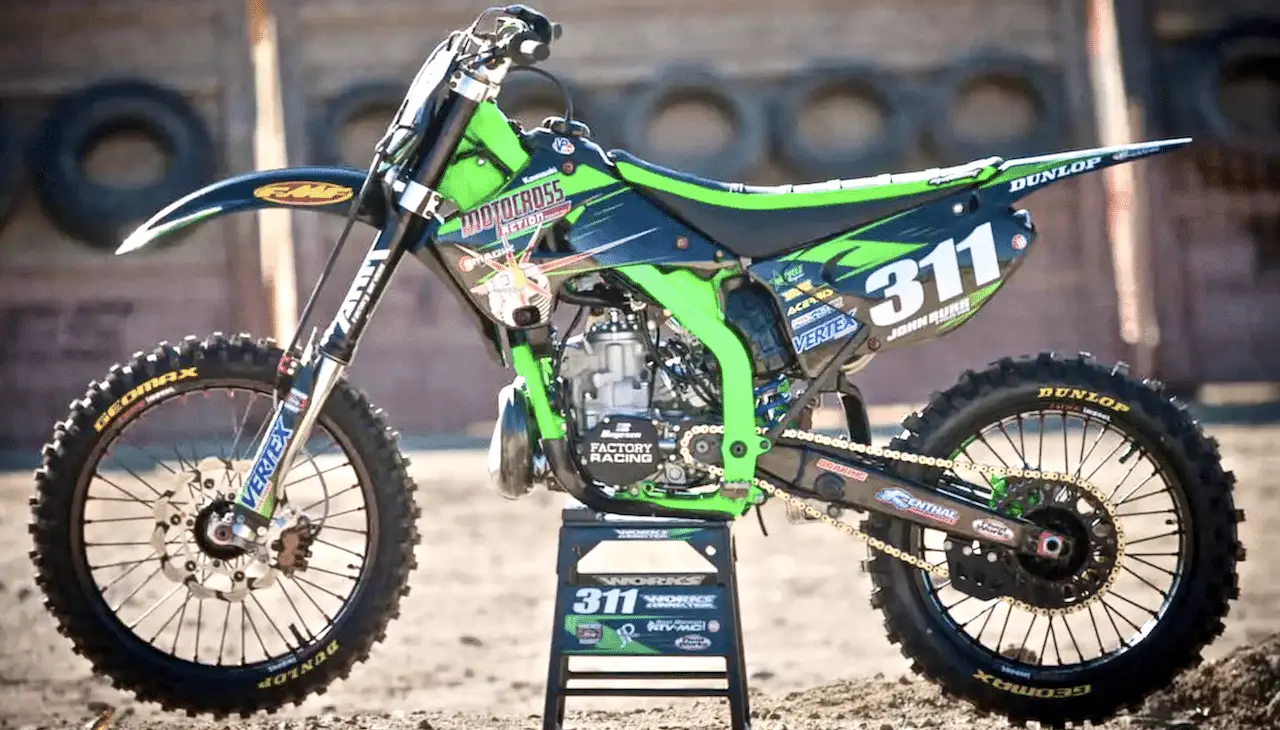 The KX250 had a potent engine that the chassis could not handle. Rebuilding it a decade later could change its inherent flaws.
The KX250 had a potent engine that the chassis could not handle. Rebuilding it a decade later could change its inherent flaws.
THE WORST KAWASAKI IN HISTORY? THE 2006 KX250
We admit being hesitant to relive the nightmares of the ill-handling 2006 Kawasaki KX250 two-stroke. This was a bike that carved corners like a dull butter knife cutting through a cheap flank steak. It was like riding a bucking bronco. The powerband was shorter than Danny DeVito with a hit harder than Mike Tyson’s left hook. Only a phenom like James Stewart could tame this wild beast. Make no mistake about it, this was a bad bike back in 2006, and Kawasaki soon realized that this was the beginning of the end of their two-strokes. But, no matter how bad the 2006 KX250 was, Kawasaki had no plans to change a thing on it. The grand plan was already in motion to stop production on the smokers and dump its R&D money into the four-stroke line. In 2007 Kawasaki pulled the plug on production of the KX250. Thankfully.
Bad bikes stick out in test rider’s minds. And, MXA never liked the 2006 KX250 two-stroke. Need proof? Here are few quotes from MXA’s original 2006 Kawasaki KX250 test.
“It is a mid-and-up engine. Low-end power is virtually nonexistent. You can’t tool around on the KX250 at half throttle, cruise through the turns or coast in the switchbacks. The KX250 is as pure a gun-and-run engine as can be. What does ‘gun-and-run’ mean? It means that you have to hammer the throttle hard in the midrange, then slam in another gear and bludgeon it again. No finesse. No throttle control. No hesitation. On or off—nothing in between.”
“Flatly, not a single MXA test rider liked the way the KX250 handled. It castered on the entrance to turns, tended to kick in braking bumps, over-steered at turn-in and understeered from the center-out. Why? The KX250 sits too high in the rear (we think it is higher than Kawasaki’s test engineers planned). The result of the stinkbug rear end is that the head angle is steeper than optimal (and steeper than the offset of the triple clamps can handle). There is no bite from the front tire on the entrance to turns. The frame geometry feels like it was the product of a committee that never met.”
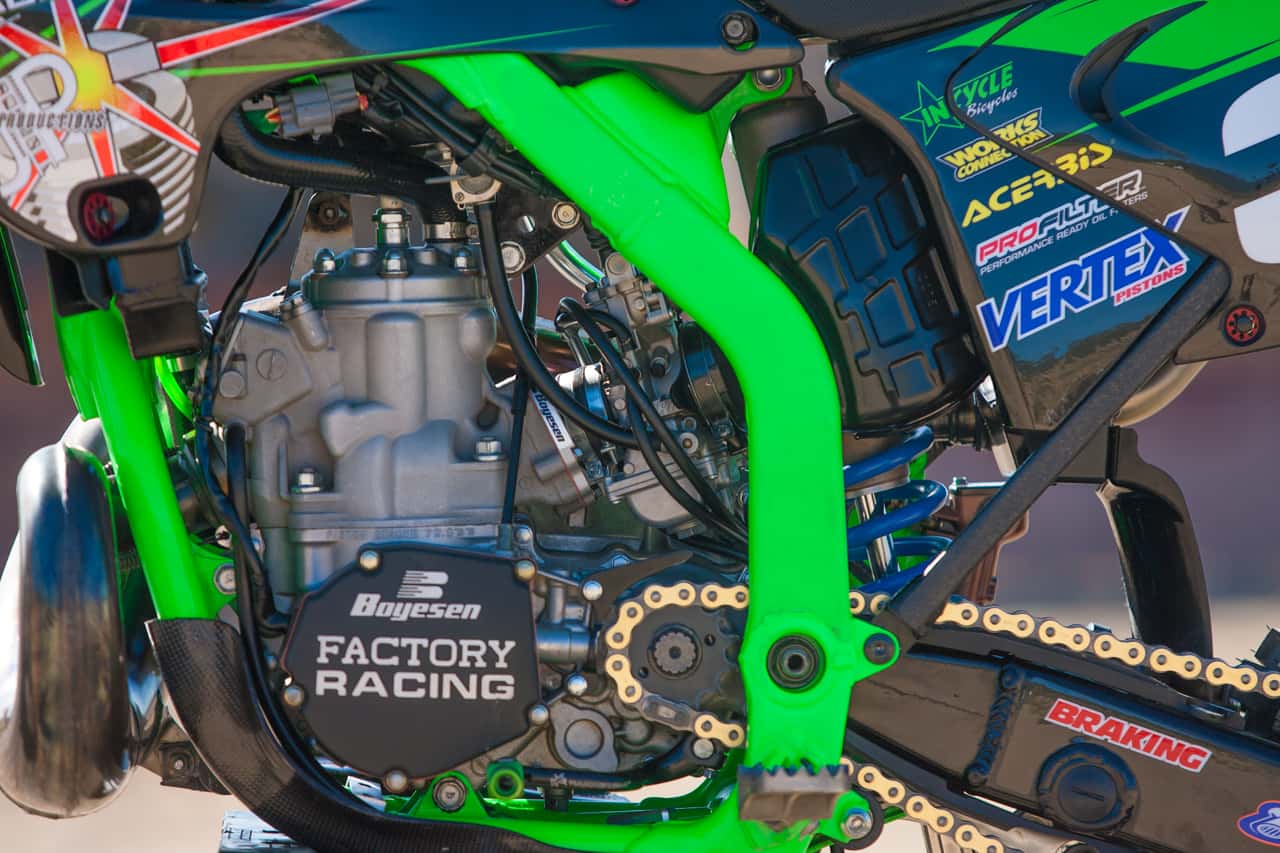 The 2006 KX250 engine was rebuilt stock with a Wrench Rabbit complete engine kit. In stock trim, the engine is a handful.
The 2006 KX250 engine was rebuilt stock with a Wrench Rabbit complete engine kit. In stock trim, the engine is a handful.
“The clutch was very draggy, and the shift lever was awkwardly positioned. The shifting would have been better if we could have found the shift lever. Every MXA test rider complained that the KX’s shift lever was tucked in so far that it felt short.”
“In one way, you should be thankful that Kawasaki is even offering the KX250 in its 2006 lineup. The KX125 wasn’t so lucky. It got the ax. In truth, the Kawasaki KX125 was a much better overall package than the KX250—and it got dropped from the 2006 Kawasaki lineup. Que sera.”
However, the 2006 Kawasaki KX250 two-stroke that MXA is testing on this page has been rescued from its grave. After 10 years of wear and tear, it needed some TLC from a caring new owner. Local Pro Jered Thomas came to its rescue after he sustained an injury that temporarily sidelined him from racing. He had nothing but time on his hands, so he decided to resurrect this old dog. The bike was stripped to the frame. Every piece was taken apart, cleaned and inspected in detail. He was fully aware of the KX250’s dark past, although he was hoping to turn a bad dream into a fairy tale with a touch of modern medicine and some elbow grease.
The stock 2006 forks on the KX250 were a blend of Showa and Kayaba technology; we called them “Showabas.” The forks were decent, but they had a tendency to drop down in the stroke too far, and then ramp up at the end of the travel, making for a wild ride. Jered searched for a set of forks that would improve the suspension and mate with the 2006 frame at the same time. Jered settled on 2008 KX250F Showa forks. They had good reviews, but would need a few modifications. The stock 25mm offset triple clamps wouldn’t mate with the Showa forks, so he used the 24.5mm offset clamps from the 2008 KX250F. In many ways the fork offset didn’t matter, because it wasn’t going to be enough to save or harm this chassis. A new steering stop had to be fabricated to make the 2008 front end fit on the 2006 chassis. The forks and shock were sent to AHM Factory Services to be re-valved and serviced. Additionally, the shock body was polished and the upper fork tubes coated black.
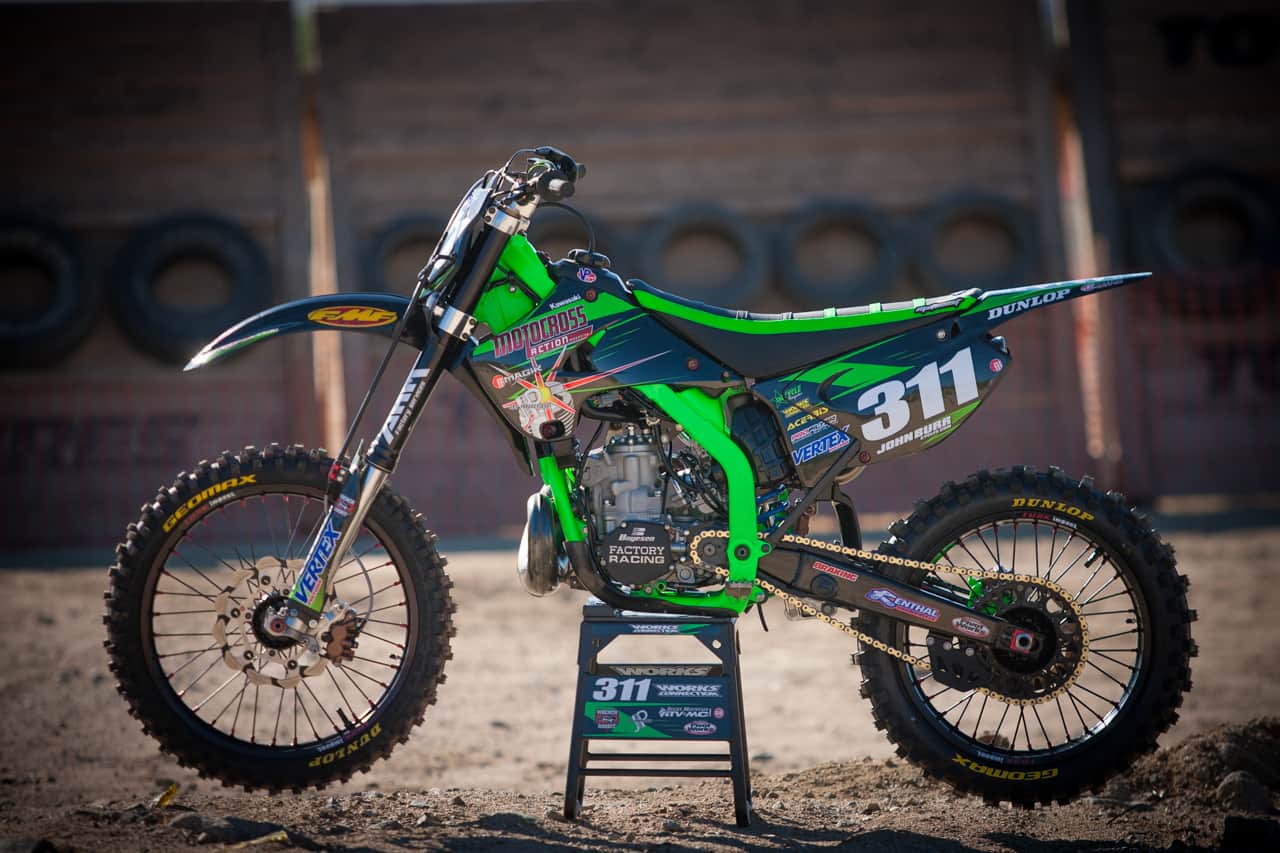
As for the engine, it had a reputation for being a handful back in 2006. Its short yet powerful powerband could only suit Pro-level riders, like Jered. So, he rebuilt it from the ground up in stock dimensions. Instead of using OEM parts, Jered purchased a Wrench Rabbit kit to rebuild the complete engine. It came in one box with one part number. An FMF Factory Fatty pipe and silencer were added to stretch out the power.
To update the rest of the ancient warrior, a 270mm Braking Batfly front rotor was mated to sturdy Tusk Impact wheels. The caliper pistons were drilled out to make them lighter, and the rear caliper was ported to keep it cool. A Boyesen Supercooler water pump was installed, along with Boyesen Factory clutch and ignition covers. E-Line carbon fiber parts littered the bike to shed weight and increase durability. The plastics were replaced with an Acerbis replica plastic kit.
We asked our elder statesmen MXA test riders who had raced the 2006 Kawasaki KX250 when it was new if they wanted to test it. None of them wanted anything to do with it. Many of them confessed to still having night terrors from the last time they rode an ’06 KX250. Luckily, the younger MXA test riders didn’t know anything about the bike’s reputation and were enthused to throw a leg over such a tricked-out KX250. We kept our mouths shut about its past. We were surprised when the riders didn’t come back terrified after the first lap. It turns out that the updated and re-valved suspension helped immensely. The 2008 Showas rode higher in their stroke and were forgiving under a load.
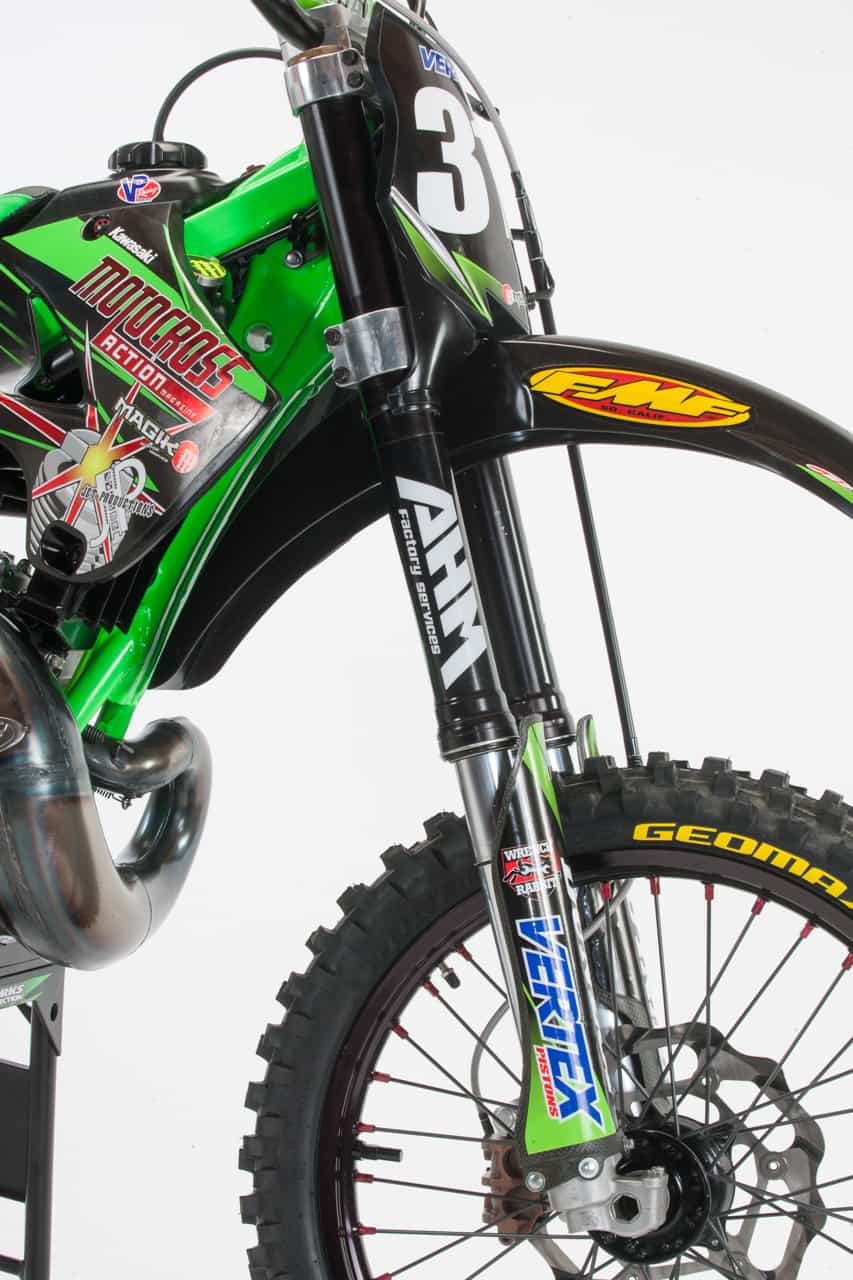 The stock 2006 forks on the KX250 were a blend of Showa and Kayaba technology; we called them “Showabas.”
The stock 2006 forks on the KX250 were a blend of Showa and Kayaba technology; we called them “Showabas.”
We did get a laugh whenever a test rider would unexpectedly fly off the track on the exit of a corner. The old-school test riders, sitting in lawn chairs to watch the youngsters ride, would nudge each other and laugh about how they called the 2006 KX250 a “stomp-and-turn bike,” because when the front end understeered off the track, you had to stomp your foot down and drag it back in line. The new offset didn’t help very much and test riders who would really know were sitting on the sidelines drinking mint juleps. The fully modded KX250 still turned like a wheelbarrow. One of the fixes from 2006 was to install a 3mm-longer linkage (126mm to 129mm) to lower the rear end by 18mm. This made the rear end softer in the initial part of the stroke, kicked the head angle out and helped the bike settle in corners. Amazingly, Pro Circuit still offers this $224.95 linkage in its catalog.
Equally amazing is that the stock engine was a hit among our faster test riders. Although peak horsepower was about a horse shy of a modern Yamaha YZ250, which just happens to be from 2006 also, it made up for it with its midrange punch. Low-end power was non-existent, but if you had the talent to ride a light switch-style powerband, you could expect to have the elastic in your BVDs stretched to the limit. The 17-year-old KX250 engine was a handful, but on loamy deep tracks it was a blast. On hard-packed terrain you could go faster by getting off and walking.
This highly modified bike did almost everything better than it did in 2006 thanks to an infusion of modern technology. Better braking, refined suspension and slightly improved handling made it less of a nightmare to ride. To make a serious race bike out of a 2006 Kawasaki KX250, you would need a torch—or dynamite. In retrospect, the best thing about getting to ride an infamous bike like the 2006 Kawasaki KX250 two-stroke was that we could walk away from it. It’s Jered Thomas’ problem now.
Want MXA’s full test of the 2006 Kawasaki KX250? Just click here.


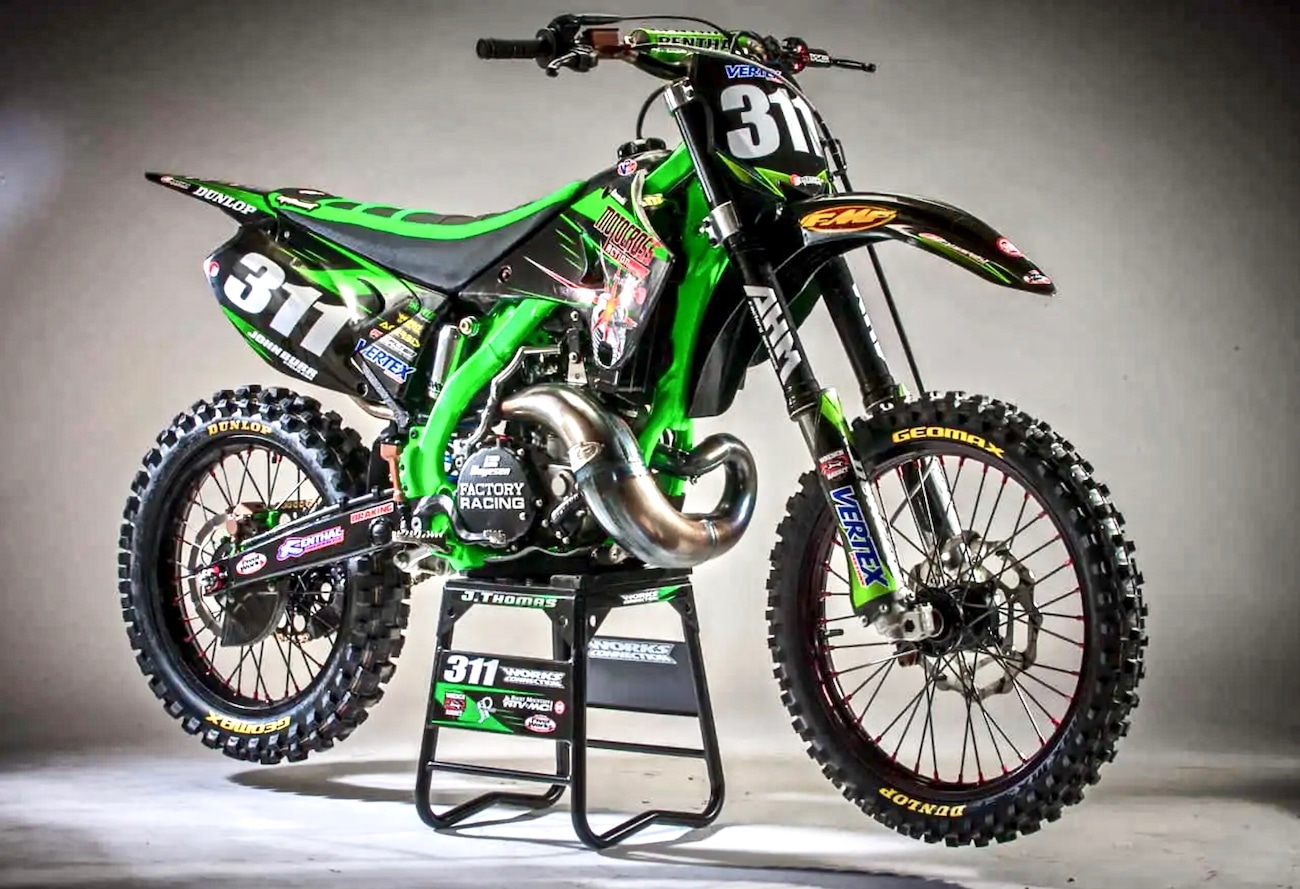
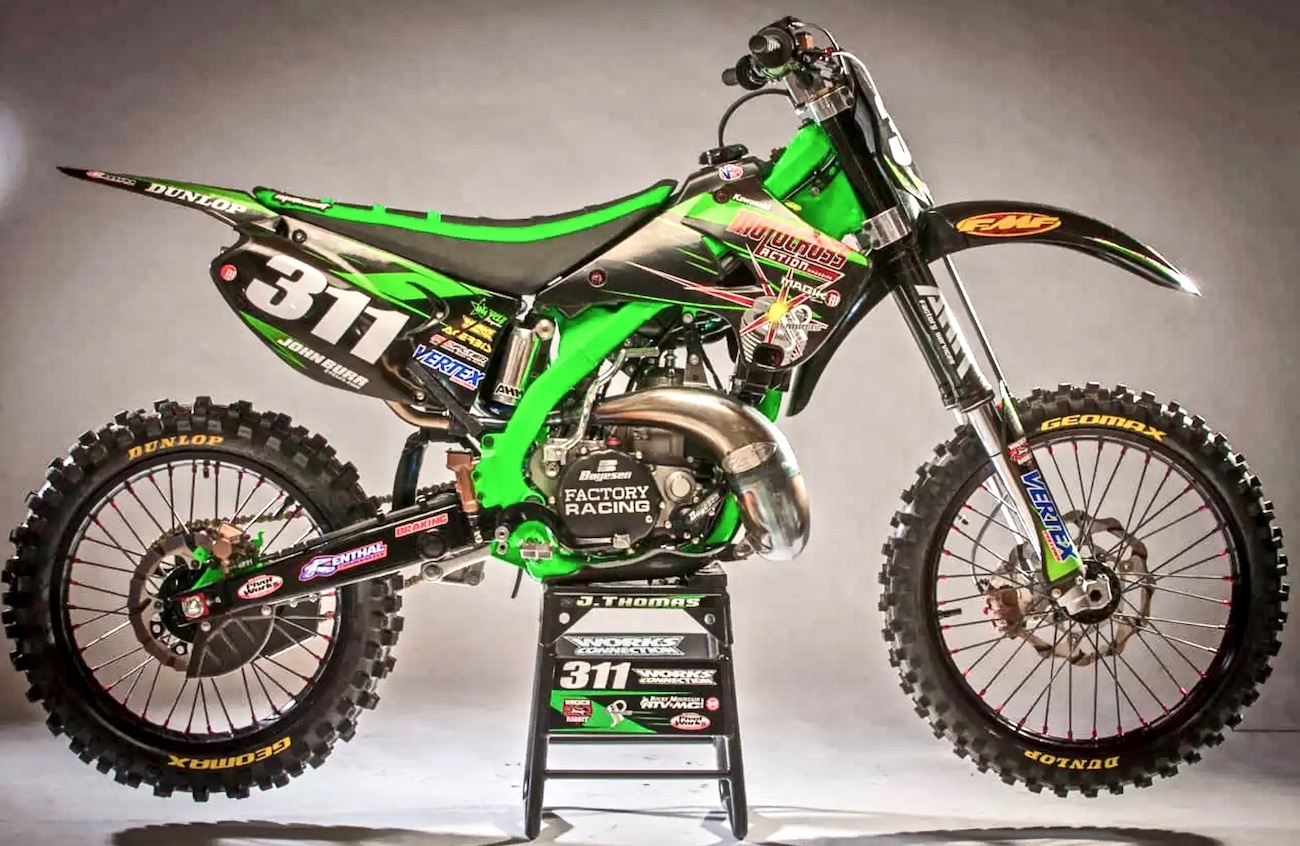




Comments are closed.